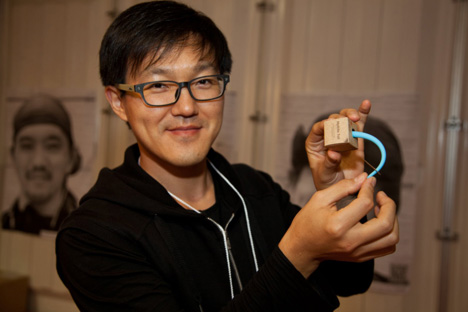![Apocalypse_468x70.jpg]()
![kolko.jpeg]()
This is the first post in a year-long series, Apocalypse 2012, where our favorite futurists, resiliency and disaster experts examine the role of design to help you prepare for...the end?
It's a pretty fascinating time to witness the demise of the most powerful and rich nation in the history of the world. All doom and gloom aside, for those of us who fancy ourselves drive-by-ethnographers, it's good people watching. What's more, it's predictable and rhythmic, as events occur and pundits pundit and protesters protest, all to the steady beat of mass production. There's no need for unnecessary anticipation, as we can easily guess when the next occupier will be tear-gassed, or when the next presidential hopeful will make an audacious and racist remark; we're pretty much guaranteed a rhetorical and canned response from our administration, followed by news of a pop star acting drunk and disorderly. It repeats so frequently, and with such a blanded regularity, that nothing is unbelievable, nothing too grotesque. An electric fence to keep the immigrants out? Of course that's what a presidential candidate would propose. New functionality to see what pornographic videos your friends are watching, right now? Of course that's what Facebook is building. This is the tongue-in-cheek fallout the feeds the Daily Show, only it isn't really very funny, because it's real, and you can't turn it off.
It's perhaps obvious to point out that the world we live in is interconnected, yet the simple statement is at the crux of our downward digression: our political system is intertwined with economics, intellectual property is connected to technology, design is at the heart of consumption and marketing feeds the beast. It's a system, and so our critique of it should be systemic, and so too should be our strategies for change. But most of us can't think of systems, because they are too big of which to think. We witness items, or people, or unique instances, and we critique and celebrate those, because they are tractable. To denounce Michele Bachmann as insane is misleadingly simple, but to rationalize her rise to power is harder, because it requires empathizing with her supporters, understanding her world view, acknowledging the role she's played in a political machine, examining her relationship-through-policy with large companies, teasing out the relationship between these companies and religious entities, and holding all of that in your head while asking yourself, "Did she really just say that 'there isn't even one study that can be produced that shows that carbon dioxide is a harmful gas'?" Seven plus or minus two, and our brain quite literally can't make sense of the world around us.
To maintain any resemblance of happiness, the skill most of us will require in the post-apocalyptic, post-United States industrial block is sensemaking, the ability to synthesize large quantities of often incomplete or conflicting information—and we must direct that skill squarely at the humanization of technology. In the history of economic prosperity and advancement, there have been only a select few armed this magic ability: us. The "creative class", those with—god help us—"creative quotient", have learned this skill largely through on-the-job training. And then, we've focused our efforts on producing things no one needs and marketing these things to people who literally aren't equipped with the education, the confidence or the discerning ability to judge.
Wealth inequality, from my perspective, is not the point of clash between the 1% and the other 99% (although, like in any system, money is intertwined in just about everything). The clash is about the ability to understand systems—to make sense of complexity—and then, when possible, to wield or manage these systems to our collective advantage. The political process is not separate from banking, lobbying, manufacturing, educating, importing, exporting, fighting or praying—and neither is the process of design. To say "we're part of a global economy" is to trivialize the complexities of the man-made world. We're part of a global technological system, and everything —including, thanks to companies like Monsanto, nature—is now a part of it. The power currency of the next era is sensemaking through systems thinking, and the occupiers are starting to realize that they don't have any money to spend in this new economy.
(more...)
![]()
![]()
![]()








 Images and Reporting by Hayden Martis
Images and Reporting by Hayden Martis
 knotted table by Ryohei Yoshiyuki
knotted table by Ryohei Yoshiyuki


























 (SHOP) was run from 11/2/2011 – 11/13/2011, at the Aoyama Gallery "Raum 1F." Yamada plans to increase the items for sale and move to different locations. The one pictured here is Yu Yamada.
(SHOP) was run from 11/2/2011 – 11/13/2011, at the Aoyama Gallery "Raum 1F." Yamada plans to increase the items for sale and move to different locations. The one pictured here is Yu Yamada.



















